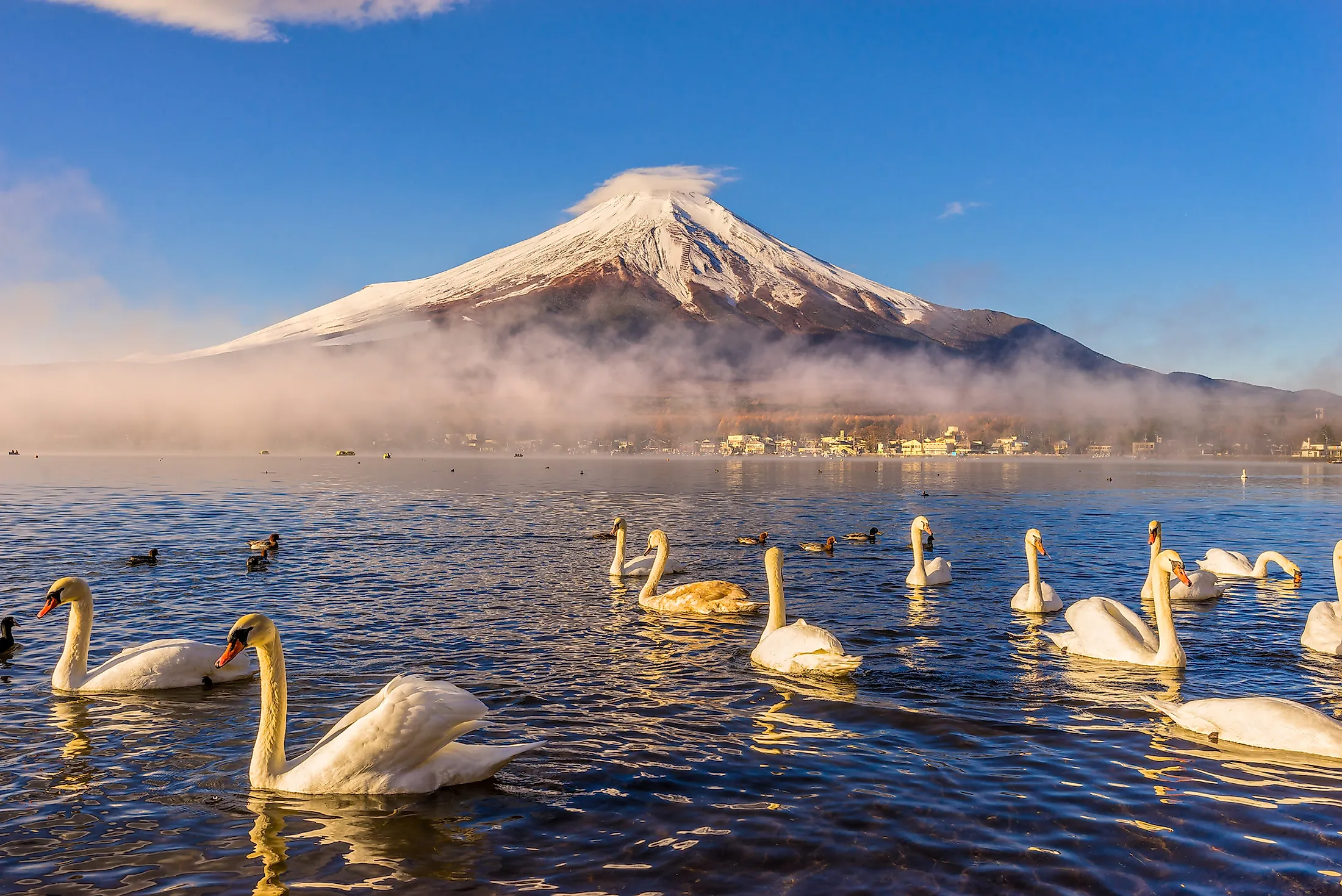
Mount Fuji
Rising to an elevation of 3,776.24m, Mount Fuji - also referred to as “Fuji-san” in Japanese, is considered the tallest mountain in Japan. Mount Fuji is situated close to the Pacific coast in the Yamanashi and Shizuoka prefectures in the heart of the large island of Honshu, about 100km to the southwest of the Tokyo-Yokohama metropolitan area. Geologists classify Mount Fuji to be an active stratovolcano, which last erupted from 1707 to 1708. The mountain is considered as the world’s 7th highest mountain peak of an island and Asia’s 2nd highest volcano that is situated on an island.
Geography
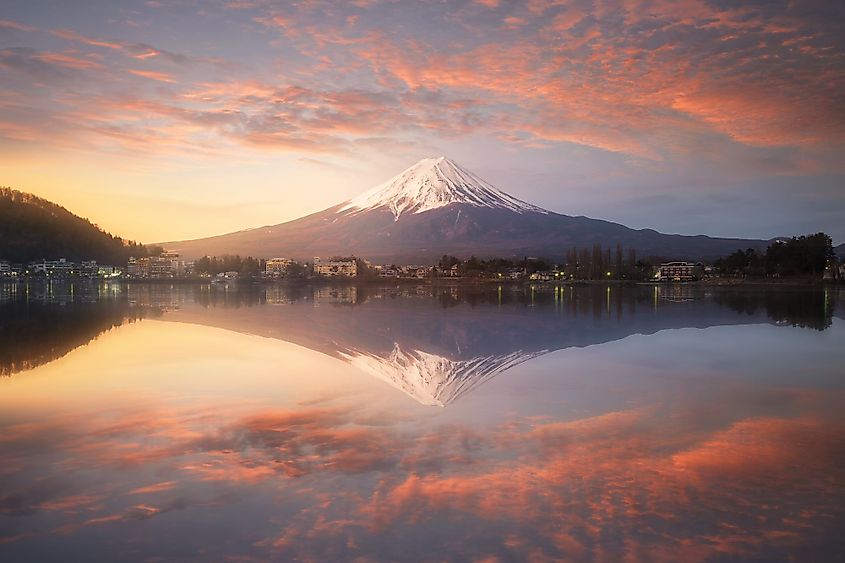
Mount Fuji is surrounded by the cities of Fujiyoshida in the north; Fuji in the south; Gotemba in the east and Fujinomiya in the southwest. The Fuji Five Lakes comprising of Lake Kawaguchi, Lake Motosu, Lake Shoji, Lake Sai, and Lake Yamanaka are found on the northern slopes of the mountain. All these lakes have been formed by blocking the lava flows and the lowest of these lakes is Lake Kawaguchi, which is situated at an elevation of 831m and is well-known for the inverted reflection of the spectacular Mount Fuji on its stagnant waters. This cultural icon and one of the most distinctive landmarks of Japan forms a part of the Fuji-Hakone-Izu National Park and has also been photographed from the International Space Station as well as various space missions. On clear days, Mount Fuji can be viewed from as far as Tokyo – the capital and largest city in Japan, as well as the cities of Yokohama, Chiba, Ibaraki, Saitama, Lake Hamana, and Tochigi.
Climate
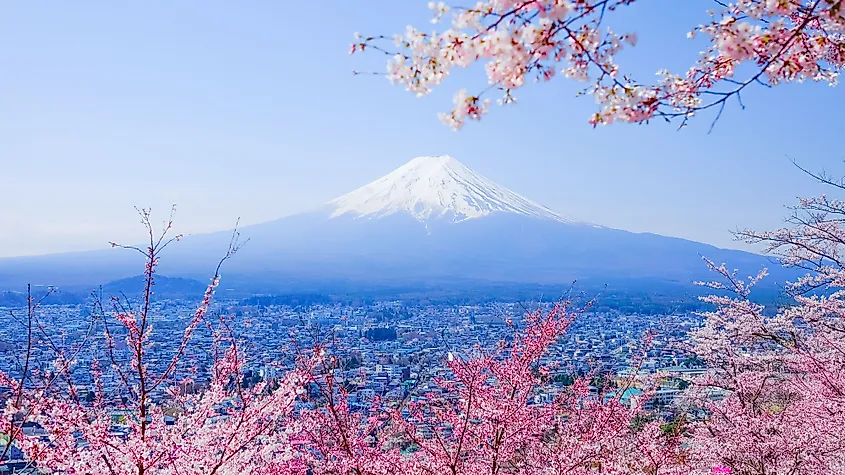
According to the Köppen climate classification, the summit of Mount Fuji experiences a tundra climate. The symmetrical cone of Mount Fuji remains covered by snow for more than five months every year. The lowest temperature recorded in Mount Fuji is -38.0°C while the highest temperature that has been recorded here is 17.8°C.
Geology
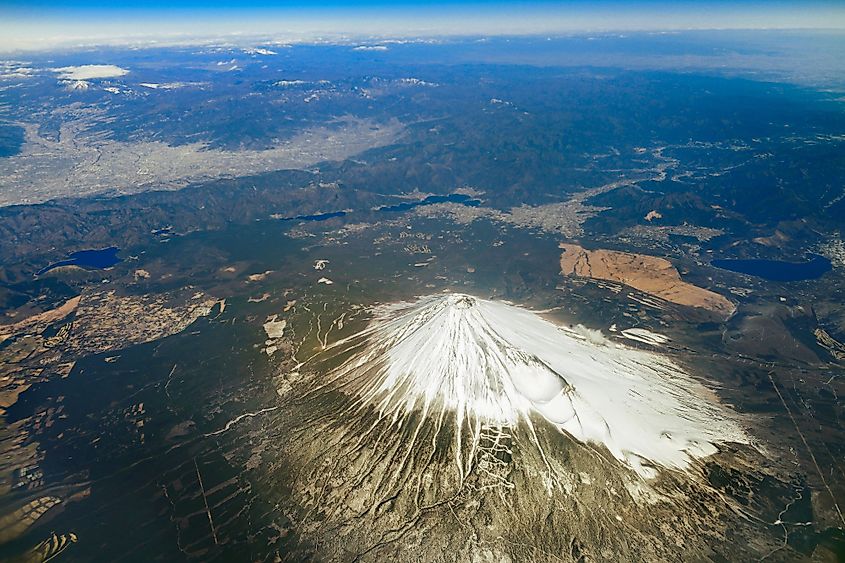
Mount Fuji sits on a “triple junction” where the tectonic plates – Amurian Plate, Okhotsk Plate, and the Philippine Sea Plate converges. The mountain is also situated close to the Northeastern Japan Arc, the Izu-Bonin-Mariana Arc, and the Southwestern Japan Arc. Geologists believe that the subduction of the Pacific Plate under the Philippine Sea Plate, drives the volcanic activities of Mount Fuji. The Four well-defined phases of volcanic activity that played a major role during the formation of Mount Fuji have been identified by scientists. These phases are Sen-komitake, Komitake Fuji, Ko Fuji, and Shin Fuji. The principal crater of Mount Fuji has a diameter of 780m and reaches a maximum depth of 240m. The base of the crater has a diameter of 100 to 130m. The jagged edges of the crater are surrounded by eight peaks including Hukusandake, Izudake, Jojudake, Kengamine, Komagatake, Kusushidake, Mushimatake, and Oshaidake. As per geologists, this active stratovolcano last erupted on December 16, 1707, which ended on January 1, 1708. It is believed that this Hoei eruption was triggered by a massive 8.4 magnitude earthquake that struck the region. However, since then there have been no signs of Mount Fuji’s eruption and in recent times the volcanic activities of Mount Fuji have been limited mostly to small earthquakes.
Cultural Significance
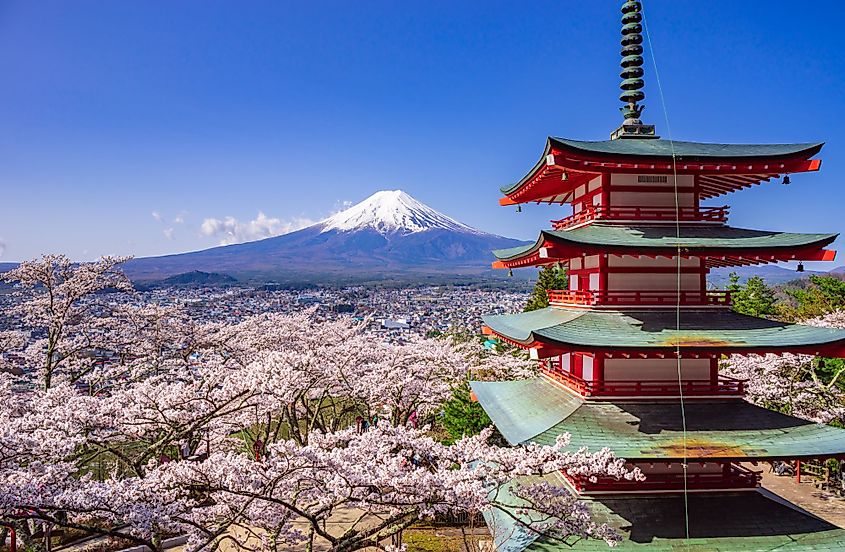
Besides Mount Tate and Mount Haku, Mount Fuji is revered as one of the “Three Holy Mountains” or sanreizan in Japan. It is also considered one of the country’s important historic sites and a special place of scenic beauty. On June 22, 2013, Mount Fuji was designated as a “Cultural Site” on UNESCO’s World Heritage List. About 25 sites have been recognized by UNESCO within the Mount Fuji area as places of cultural interest. Some of these sites include the Fujisan Hongu Sengen Taisha shrine and the Taisekiji Head Temple. Mount Fuji is therefore regarded as one of the most prominent symbols of Japan that has inspired poets, artists, climbers, and tourists for centuries.
Climbing Mount Fuji
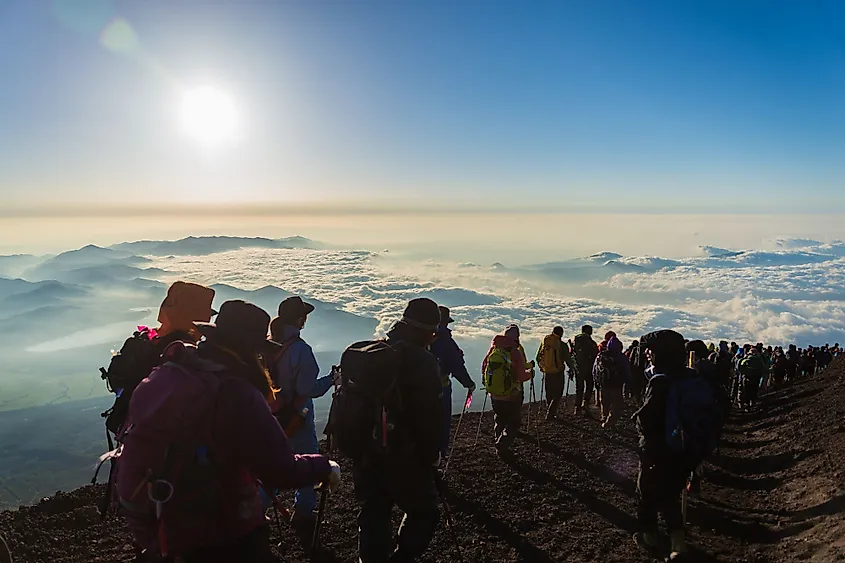
Mount Fuji serves as the most popular tourist destination in Japan for both local and international tourists. It has been recorded that over 200,000 people climb the summit of Mount Fuji every year during the warm summer months of July to August. There are many “huts” that are located on the route up to the mountain summit, which caters to the requirements of the climbers during the climbing season. Most climbers start climbing the mountain during the night to get better views of the sunrise from the summit. The sunrise from Mount Fuji is termed “goraiko” which means the “arrival of light”. The four principal routes to the mountain summit include Fujinomiya, Gotemba, Kawaguchiko, and Subashiri, while the four additional routes from the base of the mountain include Murayama, Shojiko, Suyama, and Yoshida.
Brief History
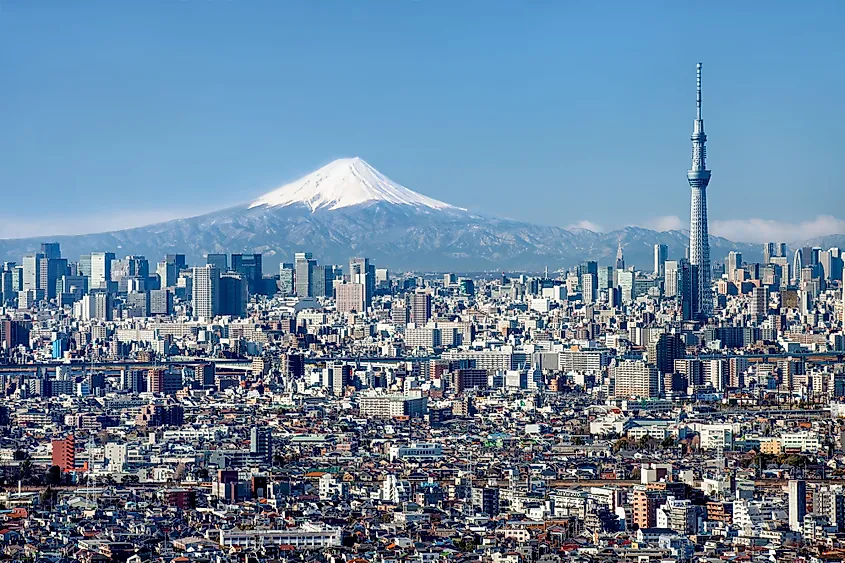
The origin of the mountain’s name is still quite uncertain. As per a 713CE government record, the mountain was initially referred to as “Fuji-no-Yama”. It is believed that the name had been derived from an indigenous Ainu term which meant “fire” and the Japanese word “san” which meant “mountain.” The current Chinese ideograms or kanji refers to the name “Fuji” as a sign of good fortune. The Japanese refer to the mountain as “Fujisan”, while in English it is referred to as “Mount Fuji.” Mount Fuji was first climbed in 663 by the Japanese aesthetic and mystic En no Odzunu. In September 1860, Sir Rutherford Alcock - the British Consul-General in Japan, became the first foreigner to climb Mount Fuji. In 1867, Lady Fanny Parkes became the first non-Japanese woman to ascend Mount Fuji. A Boeing 707 airplane carrying 113 passengers and 11 crew members crashed close to the Gotemba New fifth station of Mount Fuji on March 5, 1966. On June 22, 2013, Mount Fuji was designated as a “Cultural Site” on the UNESCO World Heritage List.











